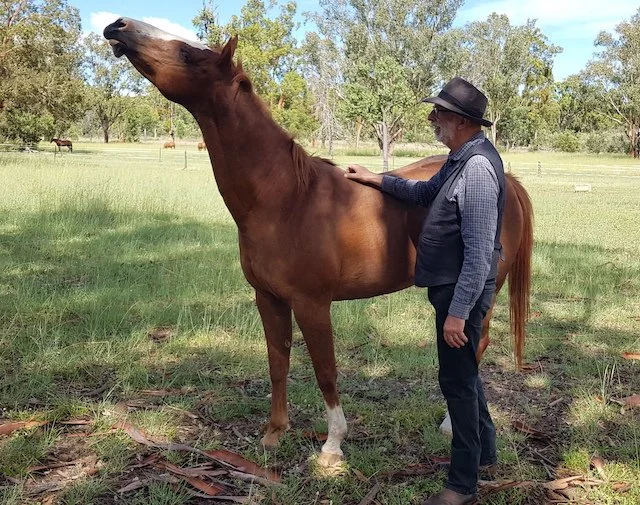In past essays I have discussed in depth the importance of focus, clarity and softness in building a good relationship and connection with a horse. In fact, I wrote an entire book on the subject. But what I don’t often write about are some of the nuanced concepts that enhance our relationship with our horse. I tend to talk more about these details at clinics, but not so much in my writings.
Here is a brief list of tips (in no particular order) that I believe cumulatively make a huge difference to our relationship with our horses. It is not a comprehensive list, but just a few concepts that come to mind at this moment. If I spent a couple of hours thinking about the topic I would be able to add several more items. Perhaps you have some thoughts you’d like to add.
Here goes:
1. Ensure that all equipment fits a horse well.
2. Where possible, only use gear that can be used with feel by the trainer. Don’t use equipment that imposes restrictions that a trainer cannot adjust moment-to-moment, eg drop noseband, or side reins.
3. When rewarding a horse only touch them in a way that feels good to them, eg, scratch an itchy spot or stroke your horse in a loving, caring way.
4. Don’t pet a horse that is not mentally connecting to you.
5. Always stop petting or scratching a horse before they are bored by it. Leave them wanting more. If a horse shows no interest in being petted, don’t pet it.
6. When asking a horse a question always apply the least amount of pressure/feel that a horse can barely detect first. It’s the number 1 pressure (P1) on a scale that goes from 1 to 10.
7. When applying more pressure than the first polite feel (P1), always ensure a horse learned from it by stopping and repeating with the first polite feel again. Repeat until the horse understands and responds to the P1 pressure.
8. Ensure everything you do finishes with a horse feeling better than it did at the start.
9. Spend as much time as possible hanging out with your horse in non-work mode. Your presence should be as normal a presence as any other member of the herd.
10. Don’t drill the work so it becomes tedious and something to dread.
11. Don’t use work as a punishment, eg don’t exercise a horse hard near the gate to make it not want to leak towards the gate.
12. When in the presence of your horse don’t be inconsequential. Your presence should be noted even when not working your horse.
13. Only work your horse within the level of fitness it has. Don’t exceed its fitness level for either exercise (cardiovascular) or muscle strength and weight bearing capacity.
14. Try to ensure that your horse has companionship.
15. Try to ensure your horse has as much space as possible to roam and exercise.
16. Nothing a horse does ever means nothing. Learn to listen and interpret what your horse is saying.
17. Never betray your horse’s trust through negligence, a 355lack of care, or ignorance.
18. Growth comes through conquering challenges, not from avoiding them.
It took about 15 minutes to compose that list. What have I missed that you would add?
When rewarding a horse only touch them in a way that feels good to them. Leave them wanting more.
When rewarding a horse only touch them in a way that feels good to them. Leave them wanting more.

